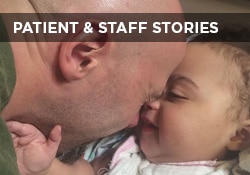This website uses cookies so that we can provide you with the best user experience possible. Cookie information is stored in your browser and performs functions such as recognising you when you return to our website and helping our team to understand which sections of the website you find most interesting and useful.
Patient Satisfaction
Patient satisfaction surveys, originated by Dr. Irwin Press, began from the question as to how patients evaluated their care, specifically whether the care they receive “satisfied” their expectation. It was the first venture into patient-dominated change.
Today, patient satisfaction has been moved inside the more comprehensive metric of the patient experience, from meeting expectations to perception of care; from hospital selected and controlled surveys to national government controlled HCAHPS surveys.
Both patient satisfaction and HCAHPS surveys ask rather simplistic questions that, if considered in terms of their implications, cover a broad range of meaningful concepts. However, what is missing is the larger question of what is most comprehensive on all of these inquiries.
Environment of Care
The environment of care is hardly evaluated in these surveys. Over the 24-hour patient admission day, hospital rooms keep patients safe or not safe, comfort or cause stress, and represent the highest quality of care or care that misses critical details. It influences every question that might be asked regarding the patient experience. Dissatisfaction is not only “an experience,” but a qualitative report on the “sick room.”
The questions on patient satisfaction and the patient experience must address who takes care of the patient when the nurse is not in the room, and what do patients experience during the many hours in between interventions when all they have is time?
Clearly, the physical environment holds the key to the patient experience and needs to console and comfort, while still being clinically efficient and safe.
Resources
Here are some resources you can use to help improve patient satisfaction at your hospital:
- HCAHPS, The Patient Experience, and C.A.R.E. whitepaper by Dr. Susan E. Mazer
- Improving the Patient Experience One Person at a Time eBook by Dr. Susan E. Mazer
- Patient and Staff Stories
For Research Bibliography on patient perception, privacy, noise, and other topics, contact us.
Also, check out these other searchable research databases.
If you’d like to have Dr. Susan E. Mazer speak at your next meeting or conference about creating a healing environment to improve patient satisfaction, contact us.










